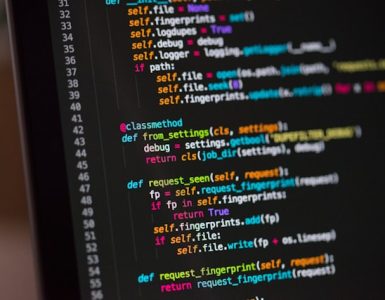If you’ve ever worked with numbers in software development, you know that precision can be a major issue. This can be especially true when working with large or small numbers, and can have major implications on the accuracy of calculations. Python, being a language with a focus on numerical calculations, has several tools at its disposal to help manage precision. In this article, we’ll explore the importance of decimal places in Python, Python’s numeric data types, and how to work with decimal places in Python using the Decimal module.
The Importance of Decimal Places in Python
When performing calculations in Python, it’s important to consider the precision of the numbers being used. In some cases, rounding errors or other inaccuracies can have significant consequences. One common example is when working with financial data – even small rounding errors can lead to inaccuracies when dealing with large sums of money. In order to avoid these kinds of issues, Python provides a number of numeric data types that can be used to handle decimal places.
Accuracy in calculations
Python’s basic numeric data types, such as integers and floats, can be useful in many situations. However, they have limitations when it comes to precision. For example, floats can only represent a finite number of decimal places, and may introduce rounding errors when performing calculations. The Decimal module helps to address these issues by allowing for a greater degree of precision when working with decimal places.
For instance, when calculating the trajectory of a spacecraft, even small rounding errors can lead to significant deviations from the intended path. In such cases, it is crucial to use a data type that can handle a large number of decimal places, such as the Decimal module.

Memory usage optimization
One potential drawback to using the Decimal module is that it can be more memory-intensive than using basic data types like floats. This is because Decimal objects store greater amounts of information in order to maintain their precision. However, in many cases the advantages of greater precision will outweigh any concerns about memory usage.
Furthermore, there are ways to optimize memory usage when working with the Decimal module. For example, one can use the context manager to specify the precision needed for a particular calculation, rather than using the default precision for all calculations. This can help to reduce the amount of memory needed to store Decimal objects.
Real-world applications
The importance of decimal places in Python goes beyond just financial calculations. In many scientific and engineering applications, calculations may require extremely high levels of precision in order to be accurate. The Decimal module can be extremely helpful in these contexts.
For example, when designing a bridge, it is important to calculate the stress and strain on various components with a high degree of accuracy. This requires using a data type that can handle a large number of decimal places, such as the Decimal module.
Overall, the importance of decimal places in Python cannot be overstated. Whether working with financial data, scientific calculations, or engineering applications, it is crucial to use a data type that can handle a high degree of precision in order to ensure accurate results.
Python’s Numeric Data Types
Before diving into the specifics of using the Decimal module, it’s helpful to have a basic understanding of Python’s numeric data types. The three main data types that we’ll focus on are integers, floats, and complex numbers.
Python’s numeric data types are an essential part of the language’s core functionality. They allow us to perform a wide range of calculations and manipulations on numerical data, making Python a powerful tool for scientific computing, data analysis, and more.
Integers
Integers are whole numbers without any decimal places. They can be positive or negative and can be used in a wide range of calculations. For example, you might use integers when counting objects or iterating through a loop. In Python, integers are represented using the int() function.
One interesting thing about integers in Python is that they have no upper limit. This means that you can use integers to represent extremely large numbers, such as the number of atoms in the universe, without running into any issues with overflow.
Floats
Floats, also known as floating-point numbers, are numbers with decimal places. They can be used to represent a wide range of values and are useful in many scientific and engineering applications. However, they have limitations when it comes to precision, as we discussed earlier.
One important thing to note about floats in Python is that they are not exact. This is because they are represented using a finite number of bits, which means that some decimal values cannot be represented exactly. As a result, you may encounter unexpected behavior when performing calculations with floats.
Complex numbers
Complex numbers are numbers that include both a real and imaginary part. They can be useful in certain mathematical and scientific situations, but are less commonly used than integers or floats. In Python, complex numbers are represented using the complex() function.
One interesting thing about complex numbers in Python is that they can be used to represent a wide range of phenomena, from the behavior of electrical circuits to the dynamics of fluid flow. They are also an important part of many advanced mathematical concepts, such as Fourier analysis and signal processing.
Working with Decimal Places in Python
Python is a high-level programming language that is widely used in data analysis, scientific computing, and web development. One of the most important aspects of working with numbers in Python is understanding how to work with decimal places. Decimal places are critical when working with financial data or other mathematically sensitive applications. In this article, we will explore three main topics related to decimal places in Python: rounding numbers, formatting numbers for display, and performing arithmetic with decimals.
Rounding numbers
Rounding numbers to a certain number of decimal places is a common task when working with financial data or other mathematically sensitive applications. In Python, you can use the round() function to achieve this. The round() function takes two arguments: the number to be rounded and the number of decimal places to round to. For example:
round(3.14159, 2)This would round the number 3.14159 to two decimal places, giving the result 3.14. It is important to note that the round() function uses a rounding strategy called “round half to even”, which means that if the digit to be rounded is exactly halfway between two possible values, the function will round to the nearest even number. For example, if we wanted to round 2.5 to the nearest integer, the result would be 2, not 3.
Formatting numbers for display
When displaying numbers in output or on a visual interface, it can be helpful to format them in a specific way. Python provides a number of ways to achieve this, including the use of format strings and the built-in string formatting methods. For example:
"${:.2f}".format(3.14159)This would format the number 3.14159 as a string with two decimal places, prefaced with a dollar sign. The {:.2f} syntax is a format specifier that tells Python to format the number as a floating-point value with two decimal places.
Performing arithmetic with decimals
The Decimal module provides a number of methods for performing arithmetic operations with decimal numbers. This includes addition, subtraction, multiplication, and division. To use the Decimal module, you first need to import it:
from decimal import Decimal
Once you have imported the Decimal module, you can create Decimal objects to represent decimal numbers. For example:
x = Decimal('0.1')
y = Decimal('0.2')
z = x + yThis code would create three Decimal objects representing the numbers 0.1, 0.2, and their sum, 0.3. It is important to note that when working with decimal numbers, you should always use the Decimal module to avoid issues with floating-point arithmetic.
In conclusion, working with decimal places in Python is an essential skill for anyone working with financial data or other mathematically sensitive applications. By understanding how to round numbers, format numbers for display, and perform arithmetic with decimals, you can ensure that your Python code is accurate and reliable.
The Decimal Module in Python
Python is a popular programming language that provides a wide range of tools for developers. One such tool is the Decimal module, which provides a number of helpful tools for working with decimal numbers in Python.
Decimal numbers are numbers that have a decimal point, such as 1.23 or 4.567. These numbers are often used in financial calculations, where precision is of utmost importance.
Advantages of using the Decimal module
One of the main advantages of using the Decimal module is that it allows for much greater precision than basic numeric data types like floats. Floats are limited in their precision and can often lead to rounding errors, which can be problematic in certain applications.
The Decimal module also provides tools for accurate decimal arithmetic and handling of rounding errors. This makes it an ideal choice for applications that require precise calculations.
Creating Decimal objects
Decimal objects can be created using a variety of methods. One common approach is to use a string representation of the number, as we saw in the previous example:
x = Decimal('0.1')Another approach is to use the Decimal constructor, which takes an integer, float, or string as its argument:
x = Decimal(0.1)Regardless of the approach you choose, the resulting Decimal object will have a higher level of precision than a float.
Performing arithmetic with Decimal objects
Once you have created a Decimal object, you can perform arithmetic operations with it just like any other number. For example, to add two Decimal objects together:
x = Decimal('0.1')
y = Decimal('0.2')
z = x + yYou can also perform other arithmetic operations, such as subtraction, multiplication, and division.
Setting the precision of Decimal objects
By default, Decimal objects in Python have a precision of 28 decimal places. However, this can be changed by specifying a different precision when creating the object. For example:
x = Decimal('0.1')
x = x.quantize(Decimal('.0001'))This code would limit the precision of the Decimal object x to four decimal places. This can be useful in applications where a specific level of precision is required.
Overall, the Decimal module provides a powerful set of tools for working with decimal numbers in Python. Whether you are working on financial calculations or other applications that require precise calculations, the Decimal module can help ensure that your results are accurate and reliable.
Conclusion
Decimal places are a major concern when working with numbers in Python. Whether you’re working with financial data, scientific calculations, or any other kind of numerical problem, it’s important to be able to manage precision effectively. Python provides a number of tools to help with this, including the Decimal module and a variety of numeric data types. By taking advantage of these tools, you can ensure that your calculations are as accurate as possible.






































